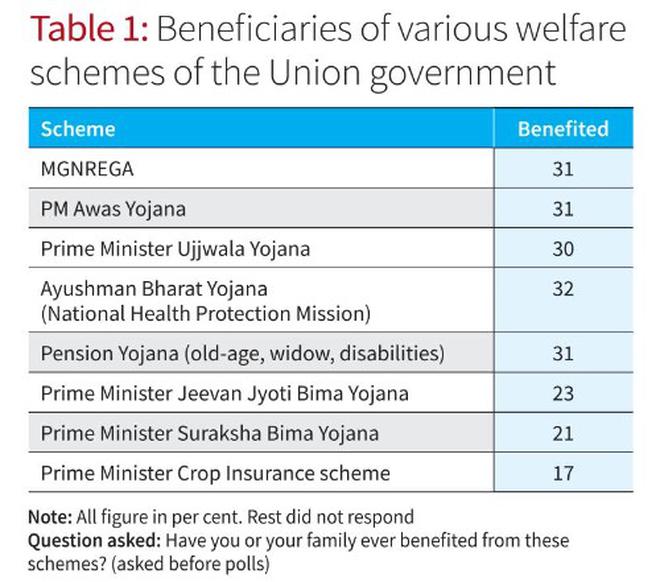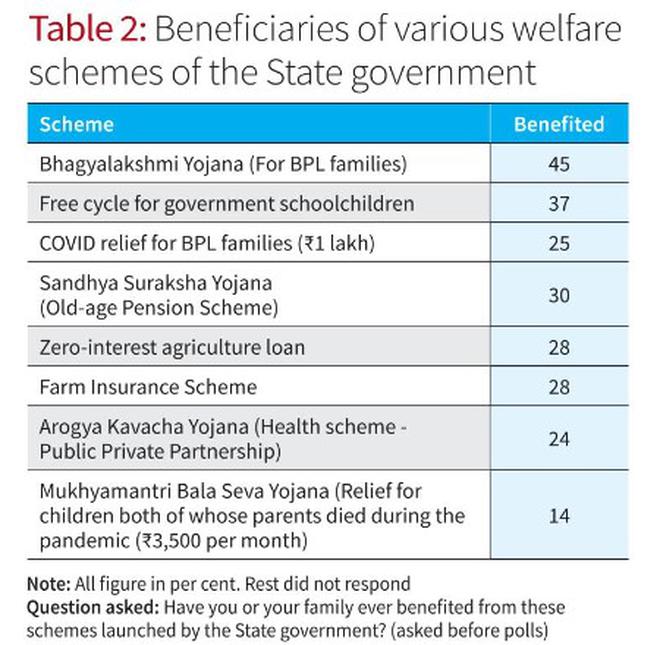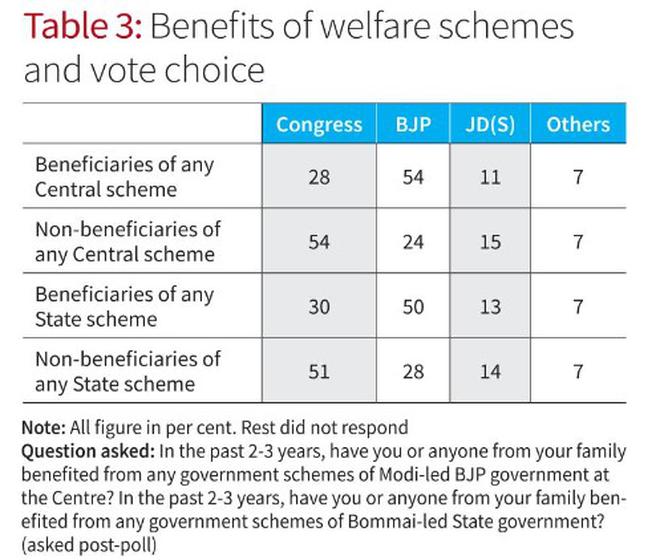Most governments make citizen-centric welfare schemes which seek to deliver public services to their people and these schemes are sometimes crucial in determining the vote choice of people. The Lokniti-CSDS survey asked voters in Karnataka about the various Union and State government-run welfare schemes in order to assess the penetration and impact of these schemes.
2023 Karnataka Assembly elections | Lokniti-CSDS postpoll study
The beneficiaries
With regard to the schemes run by the Union government, close to three in 10 voters said they had benefited from schemes such as the MGNREGS, Ayushman Bharat, Pradhan Mantri Awas Yojana, Ujjwala Yojana and Pension Yojana. However, there was lower penetration of Jeevan Jyoti Bima Yojana, Suraksha Bima Yojana and crop insurance schemes, with only two in 10 beneficiaries (Table 1).


With regard to schemes run by the State, the BJP government’s flagship Bhagyalakshmi scheme’s main objective was to encourage families living below the poverty line (BPL) to have more girls and reduce female foeticide. The scheme was linked to cash transfer in the name of the beneficiary at the time of birth for both first and second girl child. It is worth noting that this scheme had the greatest beneficiaries with 45% of voters stating that either they or someone in their family had benefited from this scheme.
The second scheme which seemed popular with 37% of beneficiaries was the free cycle scheme for government schoolchildren (Table 2). Initially, the scheme was only for girl students and for government schools, but it was later extendedto aided schools and for boys as well. Though this scheme was dropped during the current academic year, a good proportion of households had already benefited from it. The data show that almost three in 10 people benefited from the old-age pension scheme, zero-interest agricultural loan scheme and farm insurance scheme. About a quarter of voters stated that they received COVID-19 relief benefits. Close to two in 10 benefited from Arogya Kavacha Yojana which was a health scheme run by the State government. The only State scheme which saw less than 20% beneficiaries was the Mukhya Mantri Bala Seva Yojana which provided ₹3,500 per month as relief for children whose parents died during the pandemic (Table 2).In a separate question, the voters were asked whether in the past two or three years, they or anyone in their families had benefited from any scheme of the Union government and the State government.
A higher proportion of voters had benefited from at least one Union government scheme compared with State government scheme (44% versus 38%).

Impact on votes
While vote choices are seldom made on the basis of a single factor, there seems to be at least reasonable association between benefit from a scheme and vote choice: those who benefited from any scheme of the Centre or the State were more likely to have voted for the BJP as compared with the non-beneficiaries who tended to vote for the Congress or the Janata Dal(S) (Table 3). This finding will surely be an addition to the growing literature on relationship between targeted welfare measures on political choices of the recipients of welfare schemes.
The authors are researchers at Lokniti-CSDS







